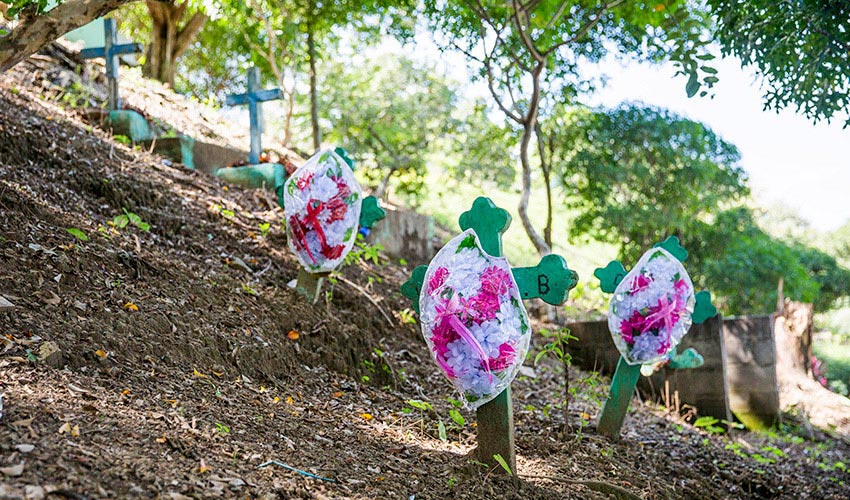FROM THE PRESIDENT
Photo above: In San Miguel, Michael meets with Edwin (16) who shares his story about encountering gang violence at school. (Photo/Michelle Siu)
I was in El Salvador when I met Edwin. Not much younger than my own son Aidan, Edwin spoke to me about the tough decisions he faced at high school. Like so many kids his age, school meant a lot and it reminded me of Aidan who was in the tricky process of trying to figure out which school to attend after graduation.
Although the two boys have similar commitments to their education, I quickly realized as I listened to Edwin’s story that the hurdles he faces to achieve this basic right were far different than my son’s.
With gang violence at its core, El Salvador has some of the highest homicide rates in the world outside of a warzone. More than a third of the population are between the ages of 11 and 25, which means violence directly affects young people. Edwin knew this all too well as he recounted how he was forced to choose between an education and his life.
After completing primary school nearby, Edwin had to look for a high school further away since there wasn’t one in his community. In El Salvador, neighbourhoods are divided by gang lines and crossing into a new neighbourhood would mean crossing into another gang’s territory. In El Salvador this isn’t uncommon. Thousands of children put themselves in harms way every day in order to get to school.
It wasn’t long before Edwin was threatened by a gang. If he came to school in their territory again, he’d be killed, they warned. Edwin’s family knew these weren’t empty threats. With no alternative schooling options, Edwin’s only choice was to drop out of school.
 El Salvador has been named the murder capital of the world. A gravesite near San Miguel is a stark reminder of this. (Photo/Michelle Siu)
El Salvador has been named the murder capital of the world. A gravesite near San Miguel is a stark reminder of this. (Photo/Michelle Siu)
Missing out on school in El Salvador is more than just losing out on an education. In a country where gang violence is rampant and unemployment rates are high, children who aren’t in school are often forcibly recruited by gangs to join their ranks, which not only endangers them physically and mentally but also severely limits their ability to find a career outside of the criminal realm.
I cannot imagine how stuck Edwin must have felt. Skipping just a few months would mean repeating the year but anything more would become dangerous to his wellbeing.
Thankfully World Vision is working to support youth like Edwin, which is why I came to visit El Salvador in the first place. Through a new program called ‘Youth Ready’, we’re working directly with youth who have missed out on school due to the threat of violence. Across El Salvador and Honduras, we give at-risk youth the necessary life skills, education and strategic partnerships to help them enter the workplace and transition smoothly into adulthood. World Vision currently works with 391 young people and we expect this number to increase to 2,400 by 2020. Edwin looks forward to Youth Ready starting in his community.
World Vision can’t give Edwin his school back, but Youth Ready aims to plug the gaps in his education. We want to be able to give young people like Edwin the best opportunity possible to succeed by providing a safe environment to learn and grow.